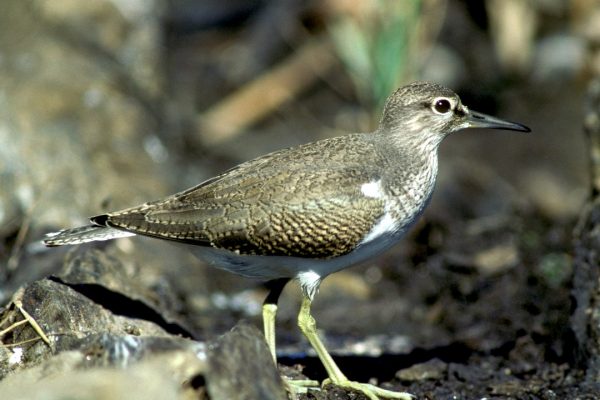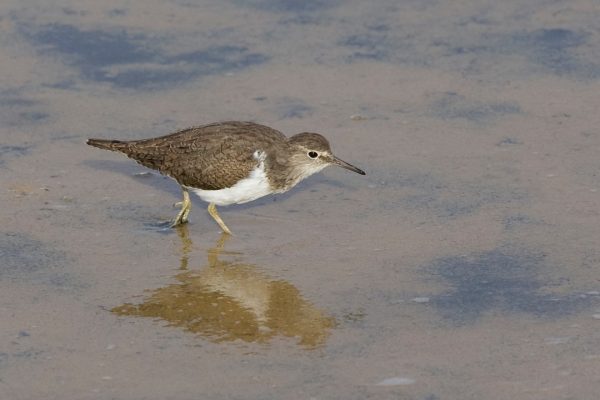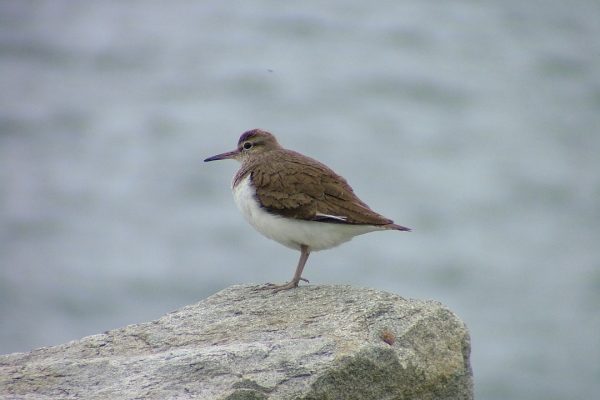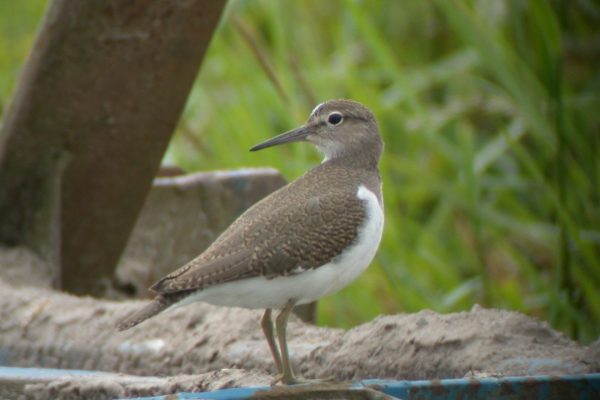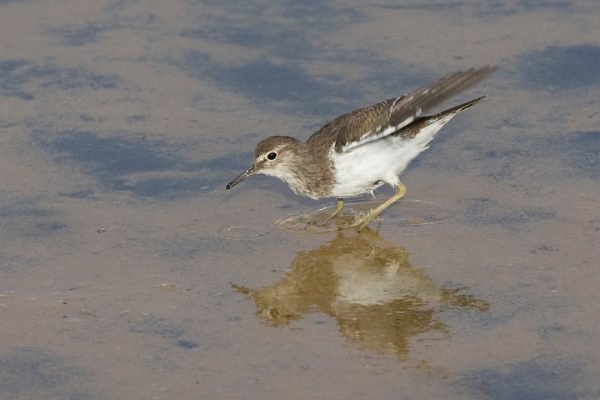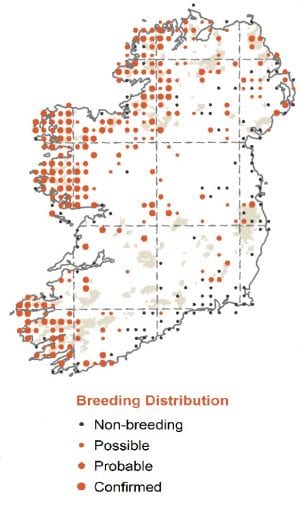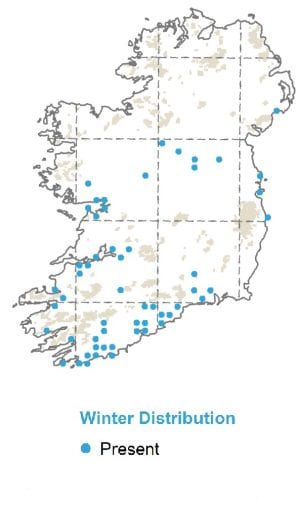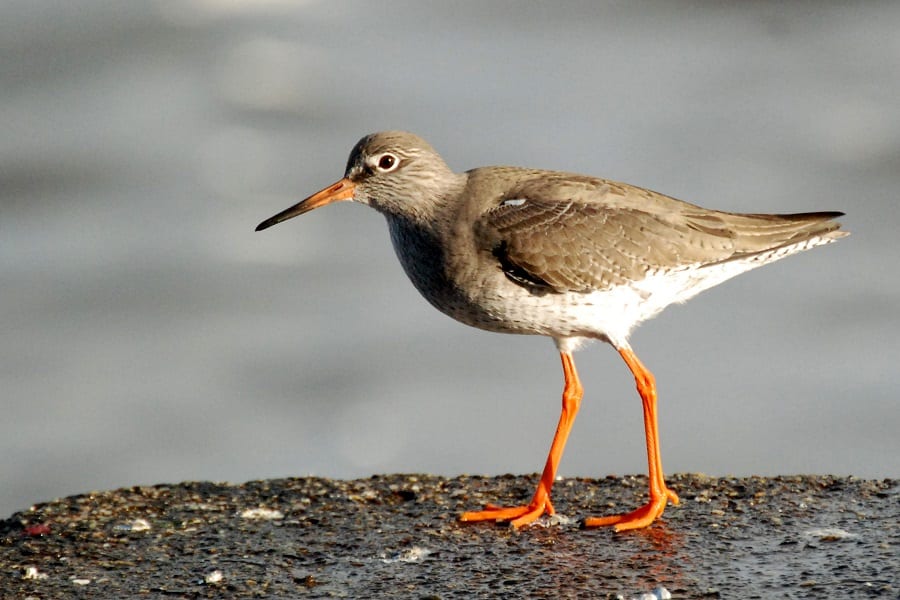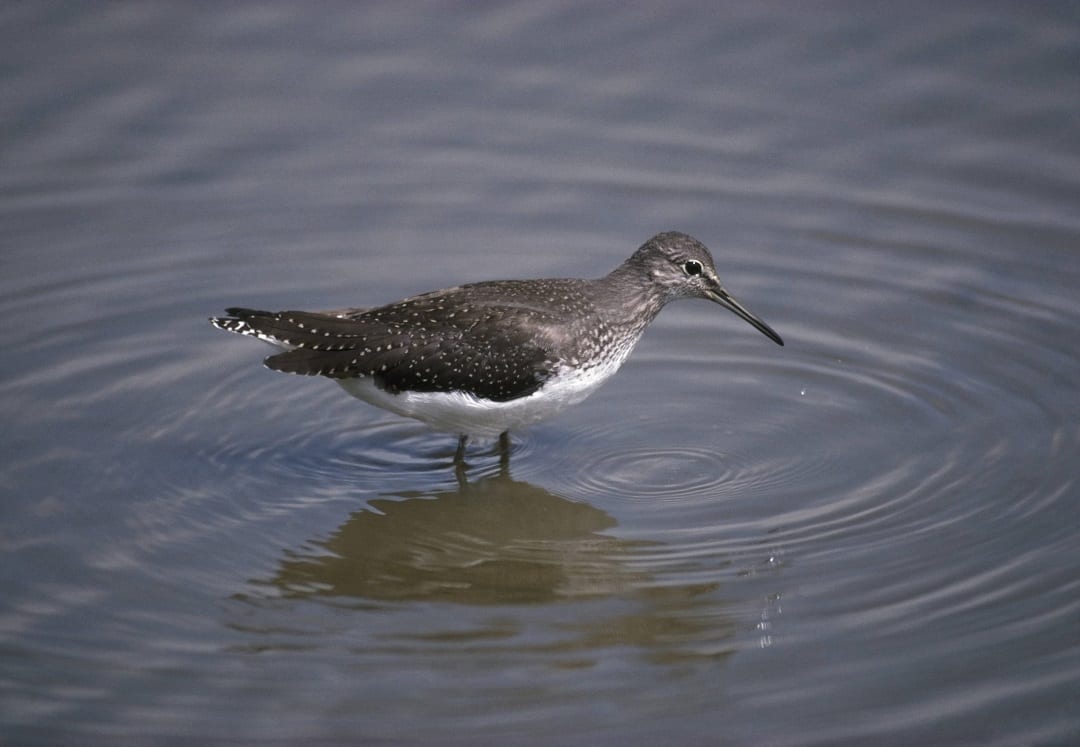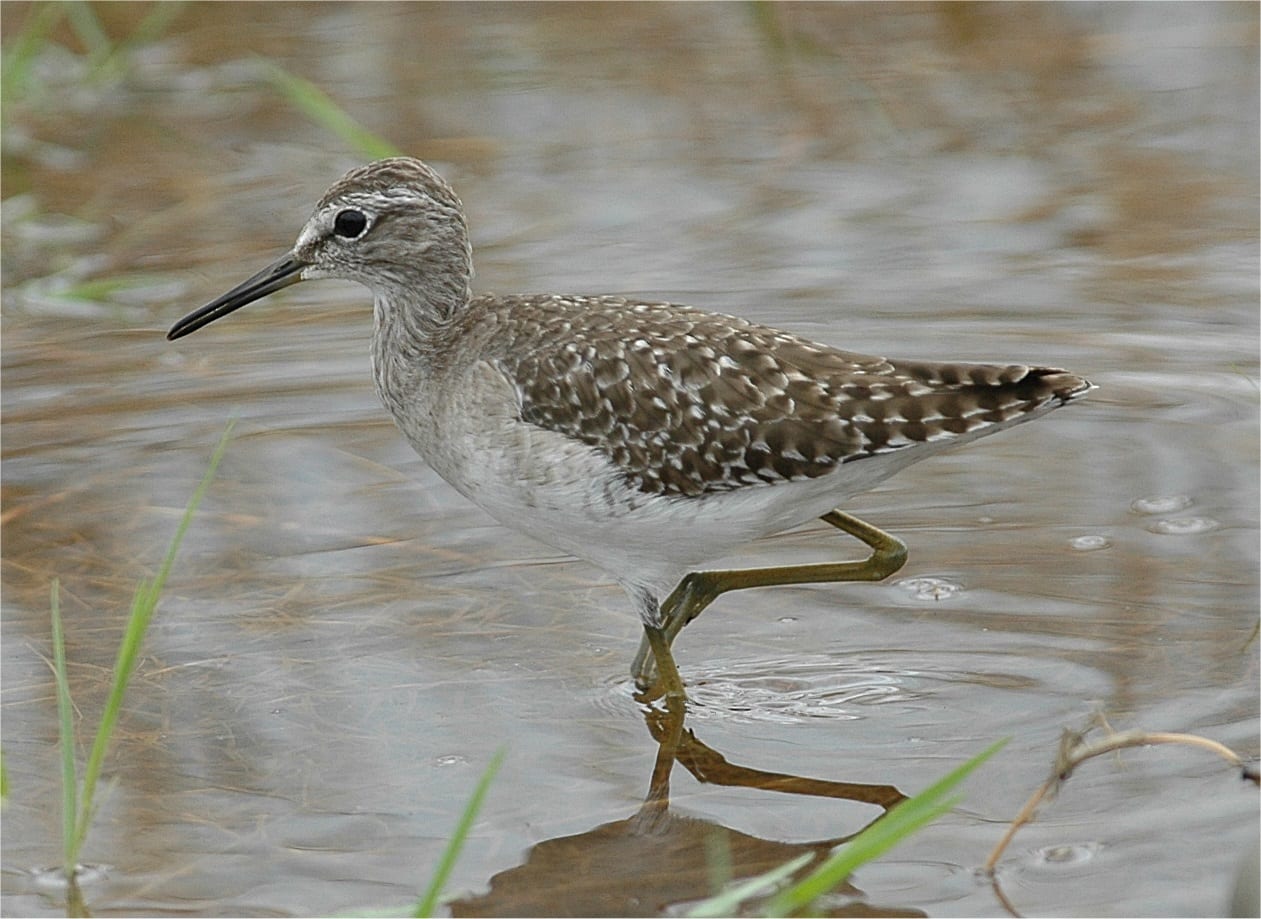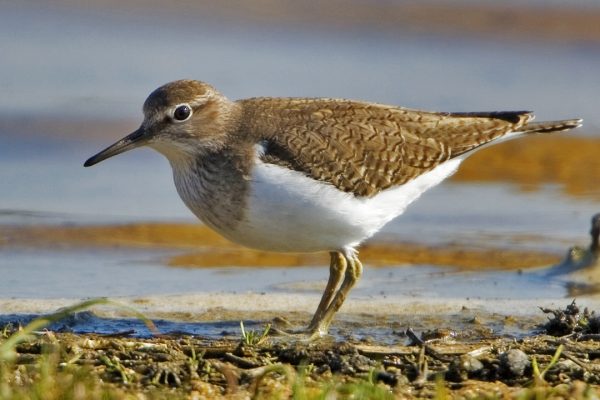
Common Sandpiper
| Irish Name: | Gobadán coiteann |
| Scientific name: | Actitus hypoleucos |
| Bird Family: | Sandpipers |
amber
Conservation status
Conservation status
Status
Summer visitor from west Africa, south of the Sahara - breeding birds present March to September.
Identification
Unlike most other waders visiting Ireland, the Common Sandpiper is a summer migrant. The first arrivals in spring betray their presence by their far-carrying whistle and rather unusual flicking wing action as they fly low over the water. Small to medium-sized, sandy brown upperparts and white underside and a distinctive white "shoulder patch" contrasting with a band of streaking across the breast. Bill longish and pointed, legs dirty yellow. Typically stands on stone beside water, bobbing tail up and down constantly.
Voice
A high-pitched whistle "weet…weet…" repeated several times - rather plaintive and seeming full of anxiety. Can be very persisitent.
Diet
Mainly flies and aquatic insects.
Breeding
Nests on the ground amongst stones and low vegetation, usually very close to water - often on river or lakeside beach. Inland lakes and sea coast, mainly in northern and western counties.
Wintering
Small numbers winter in Ireland, mainly along the southern coast. The majority of the Irish and European population winters around the Mediterranean and western Africa
Monitored by
Blog posts about this bird
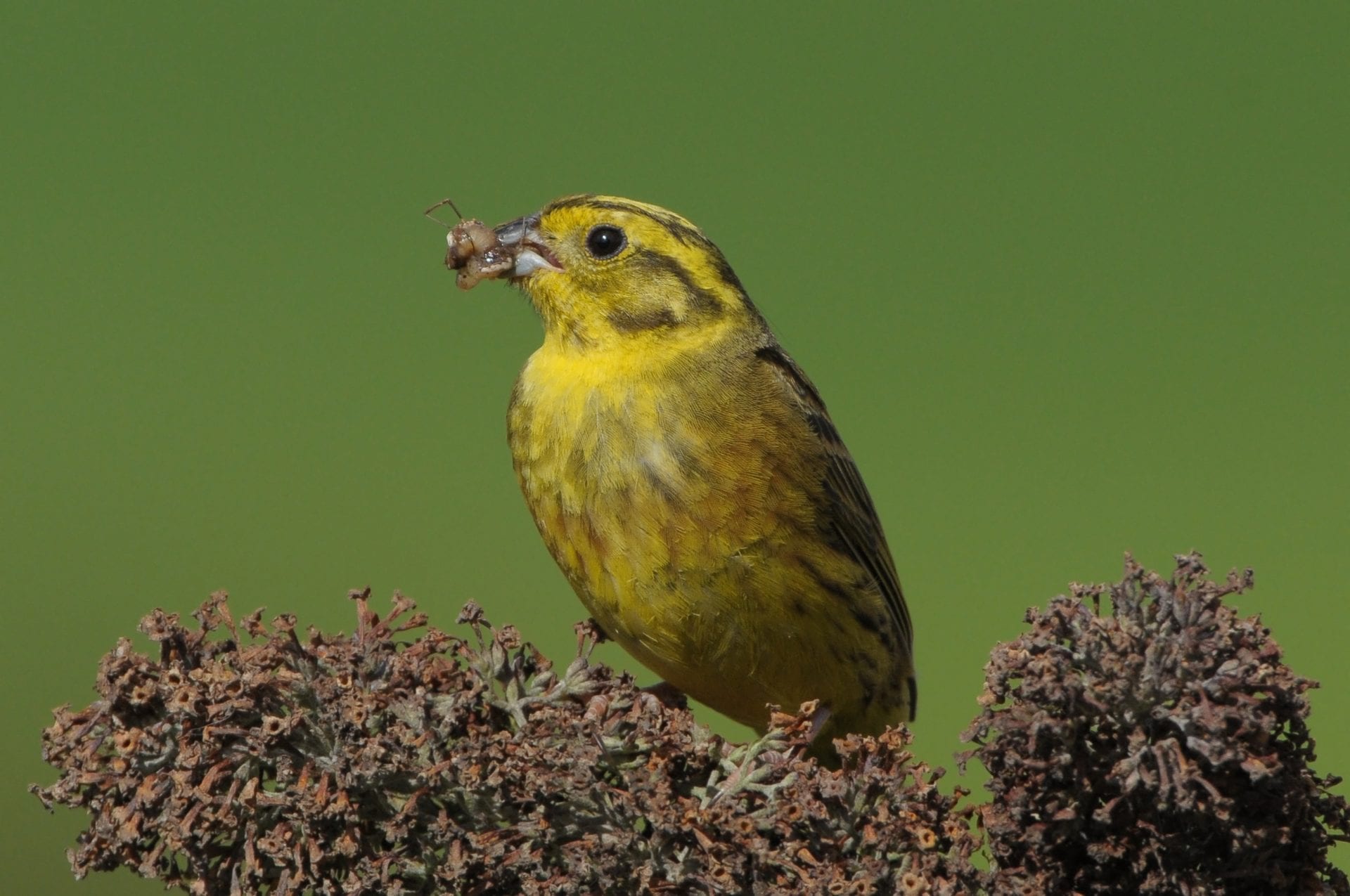
BirdWatch Ireland welcomes State purchase of Dowth Estate and establishment of Ireland's seventh National Park
BirdWatch Ireland welcomes the news of the State’s purchase of Dowth Hall demesne in County Meath and the establishment of the 500-acre property as a new National Park.
On Friday, Minister for Housing, Local Government and Heritage, Darragh O Brien TD confirmed the State’s purchase of the World Heritage lands of Dowth Hall and demesne, along with the establishment of a new National Park – the Boyne Valley (Brú na Bóinne) National Park.
A cultural and natural heritage site of national and international importance, the demesne includes Dowth Hall, an eighteenth-century neoclassical country house, and Netterville Manor, a late Victorian almshouse. The lands amount to approximately one-third of the total area of the UNESCO World Heritage Property of Brú na Bóinne, which includes the great Neolithic passage tombs of Newgrange, Knowth and Dowth.
The purchase paves the way for the establishment Ireland’s seventh National Park. It is the second National Park to be established in the east of the country alongside Wicklow Mountains National Park.


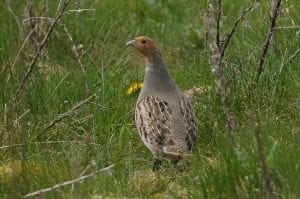
Grey Partridge. Photo: Colum Clarke.
Dowth has been actively managed by Devenish Nutrition over the last decade to preserve its cultural heritage and biodiversity. As well as their position within the Brú na Bóinne World Heritage Property, the Dowth lands are important places for nature. They host a wide range of habitats, including species-rich grasslands, native woodlands and mature hedgerows. The Boyne River which runs through the lands is designated as a Special Area of Conservation (SAC) under the Habitats Directive, and as a Special Protection Area (SPA) under the Birds Directive. Following the State purchase, the National Parks and Wildlife Service (NPWS) will maintain the careful management of the farmlands, habitats and species to date and will work to protect and improve it even further. The new Boyne Valley (Brú na Bóinne) National Park is rich in bird life. 54 species of birds have been recorded at the site including Red-listed species of conservation concern such as Grey Partridge, Woodcock, Kestrel, Swift and Yellowhammer. 19 species recorded at the site are on the Amber list, including Kingfisher, Common Sandpiper, Cormorant and Little Grebe. Dowth is also a haven for other wildlife and plants. The River Boyne is of national importance for a number of species of bat including Common Pipistrelle, Soprano Pipistrelle, Natterer's Bat, Brown Long-eared Bat, Leisler’s Bat, Whiskered Bat, Daubenton’s bat and Nathusius’ Pipistrelle. It also hosts many species of butterfly including Small Tortoiseshell, Ringlet, Holly Blue, Peacock, Meadow Brown, Speckled Wood, Large White, Green-veined White, Small White, Red Admiral and Painted Lady. While surveys have not been completed, it is likely that a large population of macro-moths (of which there are over 800 species) occur within managed habitats. Seven species of bee have also been recorded here including White-tailed Bumblebee, Honey Bee, Common Carder Bee, Garden Bumblebee, Early Bumblebee, Red-tailed Bumblebee and Buff-tailed Bumblebee.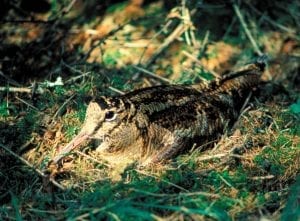
Woodcock on the nest. Photo: Richard T Mills
Minister for Housing, Local Government and Heritage, Darragh O’Brien TD welcomed the significant purchase and highlighted the many opportunities it could bring. “Rarely does the State get an opportunity to acquire lands of such significance. This landscape and property is of exceptional heritage importance. Here in this one place, we have over 5000 years of recorded history. In our care, it will significantly enhance our management of the Brú na Bóinne World Heritage landscape. We will conserve and protect Dowth’s heritage in line with our obligations to UNESCO and we will enhance responsible tourism, ensuring it becomes a standout destination. This purchase opens up possibilities for us to develop heritage partnerships, protect remarkable heritage and make it accessible. It is simply an outstanding opportunity for an outstanding place.” Minister of State with responsibility for Heritage and Electoral Reform, Malcolm Noonan TD said that the purchase represented an “outstanding addition to Ireland’s family of National Parks”. “We look forward to sustaining and growing this legacy to ensure that farming, nature and the cultural heritage of this ancient landscape can continue in harmony, as they have done since our ancestors first settled in the Boyne Valley over 5,500 years ago. Through our partnerships with state agencies, departments, local authorities and communities – which are enshrined in Heritage Ireland 2030, our national heritage plan – we are committed to nurturing Dowth as a key pillar of Ireland’s remarkable heritage that we can all admire, be proud of and enjoy.” The National Parks and Wildlife Service (NPWS), the National Monuments Service and the Office of Public Works (OPW) will now work together to deliver a Masterplan for the property that allows for the protection, presentation and management of this area of the Boyne Valley. Management of Dowth Hall and lands will form part of the existing Brú na Bóinne Management Plan and strengthen the vision for the protection of Dowth’s remarkable heritage, including the Neolithic passage tomb discovered in 2017 under Dowth Hall itself. “The work begins now of developing a Masterplan for Dowth. We will approach this with a keen sense of responsibility, ambition and excitement, knowing that this is a remarkable opportunity for Ireland’s heritage to play a lead role in the regional economy and in place-making for the east of the country,” said Niall O Donnchu, Director General of National Parks and Wildlife Service. “This new National Park is a special place where history, heritage, nature and culture collide. We will work with stakeholders in developing a Masterplan that will deliver on its full potential for locals, visitors and generations to come. I want to pay tribute to our team across the National Parks and Wildlife Service and the National Monuments Services for their work on this acquisition, and on their readiness to take over custodianship of this remarkable place from Devenish who have championed and maintained it with such care over the last 16 years.”
